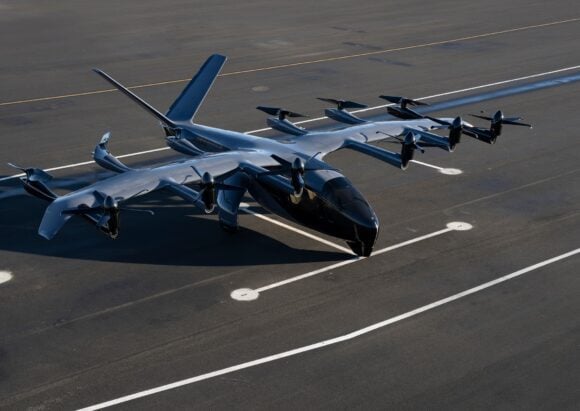
uam1.1
UPS’ drone delivery company, UPS Flight Forward, became a real airline when Federal Aviation Administration (FAA) awarded air carrier and operator certification to the new UPS unmanned aircraft system (UAS, or drone) delivery company.
“This is history in the making, and we aren’t done yet,” said David Abney, UPS chief executive officer. “Our technology is opening doors for UPS and solving problems in unique ways for our customers. We will soon announce other steps to build out our infrastructure, expand services for healthcare customers and put drones to new uses in the future.”
“This is a big step forward in safely integrating unmanned aircraft systems into our airspace, expanding access to healthcare in North Carolina and building on the success of the national UAS Integration Pilot Program to maintain American leadership in unmanned aviation,” said U.S. Secretary of Transportation Elaine L. Chao.
Through the Department’s Unmanned Aircraft Systems (UAS) Integration Pilot Program (IPP), the FAA has approved a Part 135 operating certificate for Google’s drone delivery company, Wing, and now UPS Flight Forward. As a Part 135 airline, these companies can perform revenue-generating package delivery activities within federal regulations. UPS Flight Forward and Wing may operate multiple drones under one certificate, in revenue service, and the delivery companies have the authority to flying beyond visual line of sight.
UPS Flight Forward will initially expand its drone delivery service to support hospital campuses around the country and to provide solutions for customers beyond those in the healthcare industry. UPS Flight Forward plans in the future to transport a variety of items for customers in many industries, and regularly fly drones beyond the operators’ visual line of sight.
After receiving the FAA certification, the UPS subsidiary immediately launched the first drone delivery flight by any company under Part 135 Standard at WakeMed’s hospital campus in Raleigh, N.C. That flight, using a Matternet M2 quadcopter, was flown under a government exemption allowing for a “beyond visual line of sight” (BVLOS) operation, also a first in the U.S. for regular revenue-generating delivery.
As a participant in the U.S. Transportation Department’s Unmanned Aircraft Systems Integration Pilot Program, the North Carolina Department of Transportation (NCDOT) partnered with UPS Flight Forward. As the operator, they have been engaged in the delivery of healthcare supplies around a major hospital campus in Raleigh, North Carolina. The flights have focused on the delivery of blood for potentially life-saving transfusions, as well as other medical samples for lab work.
UPS Flight Forward’s certificate permits the company to fly an unlimited number of drones with an unlimited number of remote operators in command. This enables UPS to scale its operations to meet customer demand. Part 135 Standard also permits the drone and cargo to exceed 55 pounds and fly at night, previous restrictions governing earlier UPS flights. In other words, there are no limits on the size or scope of operations.
“UPS Flight Forward is benefitting from our knowledge as one of the world’s leading airlines. The Flight Forward organization is building a full-scale drone operation based on the rigorous reliability, safety, and control requirements of the FAA,” Abney said.
Part 135 Standard certification enables UPS to integrate drones into the UPS logistics network, creating the potential for new applications in many industries. The company has a long-term plan with important milestones in view. These include:
- Expansion of the UPS Flight Forward delivery service to new hospitals and medical campuses around the country.
- Rapid build-out of ground-based, detect-and-avoid (DAA) technologies to verify drone safety, while enabling future service expansion.
- Construction of a centralized operations control center.
- Regular and frequent drone flights beyond the operator’s visual line of sight.
- Partnerships with additional drone manufacturers to build new drones with varying cargo capacities.
- Adding new services outside of the healthcare industry, including the transport of special commodities and other regulated goods.
Insight
UAM operations will need to be operated under Part 135 (UAM Insight 18 September 2019 UAM Flights Need to Comply with FAA Part 135 Operating Regs). FAA issuing an airline certificate to unmanned operations paves the way for UAM Part 135 operations in the future.
Views: 1




